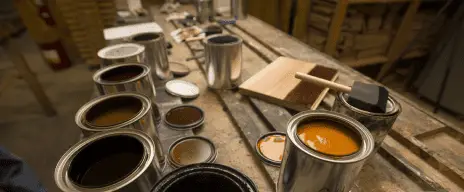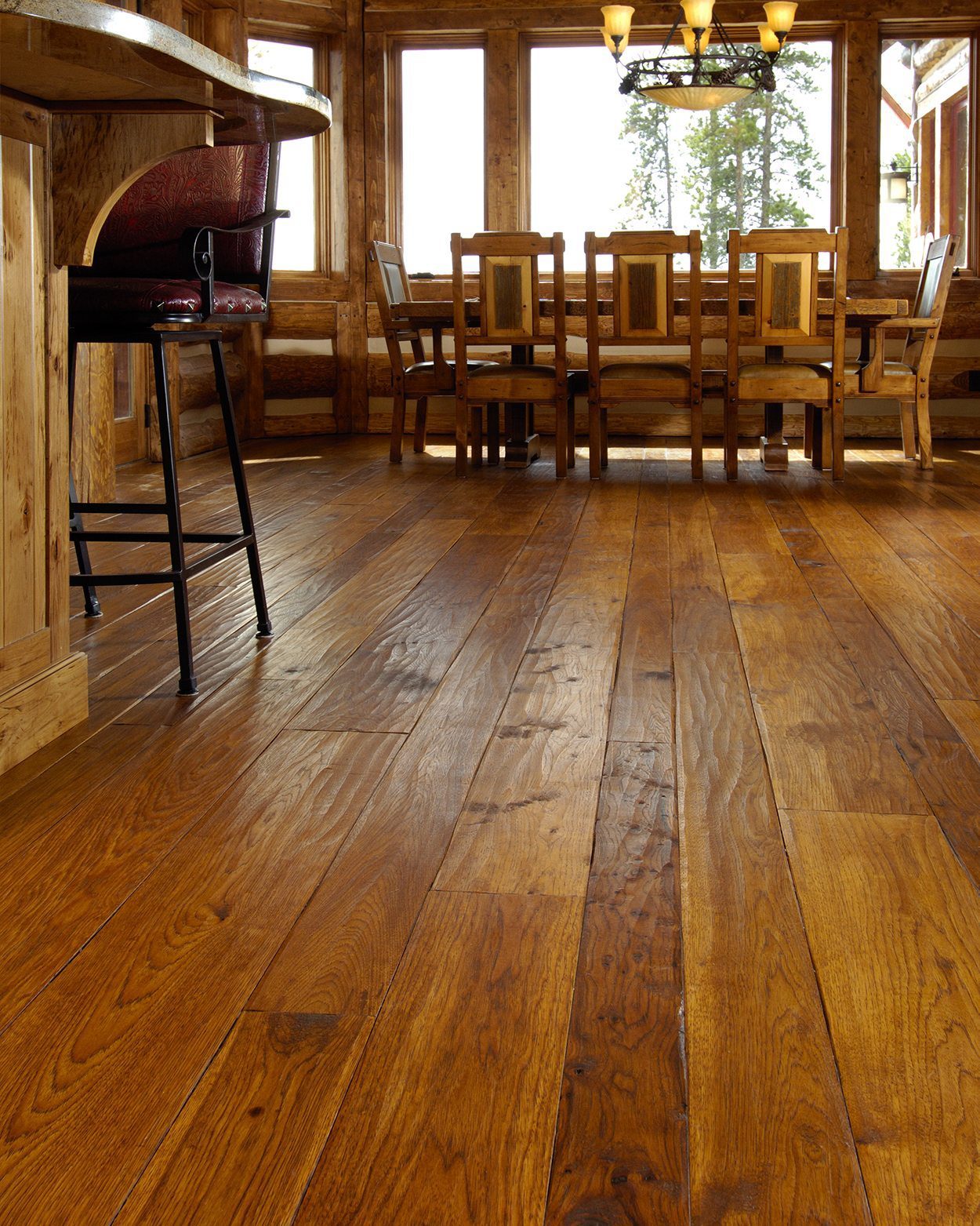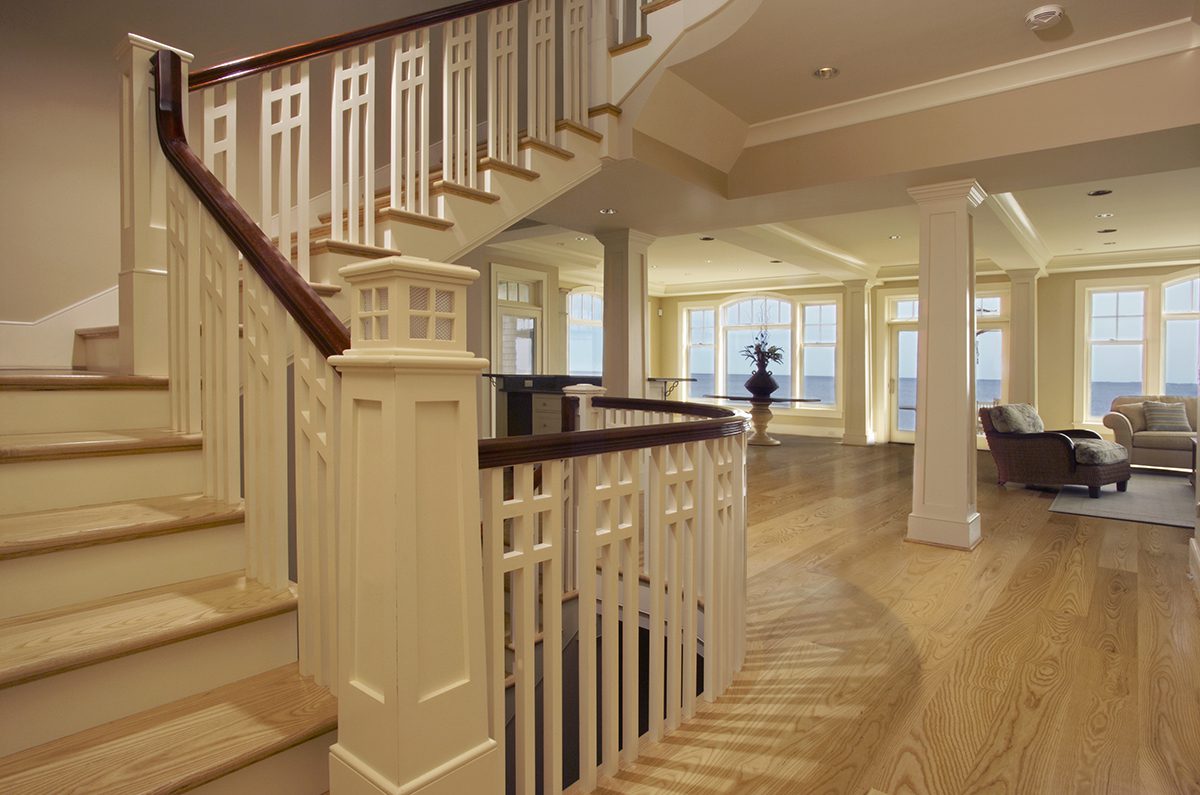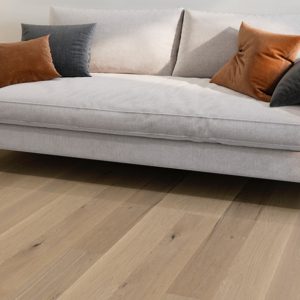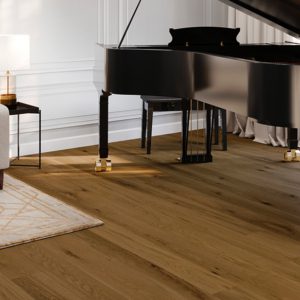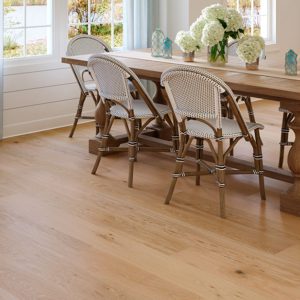Talk with us today about your project. We make it easy to browse, design, select and plan for your new wide plank floors with your own personal Carlisle Wide Plank Floor Specialist.
You have questions, we have answers. Explore the most frequently asked questions about Radiant Heat wood flooring below. Need assistance or want to know more? Contact Carlisle or call 800-595-9663 today to get all your inquiries answered.
Can You Use Radiant Heat With Wood Floors?
Radiant floor heating systems provide warmth for an interior space by transferring heat through the floors. These systems produce heat by running electric heating cables or pipes filled with warm water beneath a flooring surface. As the warm air rises off the floor, it heats the entire room. While many believe that radiant heat will cause a wood floor to cup or warp, advances in heated floor technology have made it possible to confidently install wood floors over radiant heat. However, every manufacturer uses different raw materials and manufacturing processes to produce different types of hardwood flooring. It is important to ask specific questions about the product you are considering.
What are the advantages of radiant floor heat?
In-floor radiant heating systems are highly reliable and will evenly distribute the temperature in the room. By heating a room from the floor up, radiant heating systems require less energy, helping to save money on heating costs. Radiant heating systems are ideal for people with allergies since there are no forced air vents blowing dust, dirt or allergens into the room.
What are the advantages of radiant heat for wood floors?
Radiant heating systems have less fluctuation in relative humidity when compared to other heating systems, making them ideal for use with hardwood flooring.
What are the challenges of installing wood floors over radiant heat?
The level of difficulty will depend on the type of radiant heat you are using, but the biggest challenge is to first ensure that the radiant heat system is engineered to provide the right level of heat given the flooring you have chosen. Tile will conduct heat more easily while wool carpets reduce heat transfer. With wood flooring, it is especially important to understand the layout of the tubing so that if nailing is being used, the pipes will not be punctured. Other than these considerations, installation over radiant heat is similar to standard installations.
What’s the best wood species for radiant heat?
The most stable solid hardwoods for a radiant heating system include American Cherry, American Walnut and White Oak floors, while less stable woods include harder varieties like Maple and Brazilian Cherry. However, with high-quality raw materials, attention to detail during manufacturing and proper installation processes, most hardwoods can be installed successfully over radiant heat.
What’s the best type of cut for radiant heat?
Quartersawn or riftsawn wood planks will be more stable than plainsawn wood flooring. Plainsawn floorboards expand from side to side when exposed to changes in relative humidity, increasing the likelihood of gaps and cupping. In contrast, quartersawn or riftsawn boards expand from the top to the bottom, minimizing gapping and cupping. However, proper manufacturing processes and installation procedures can result in excellent results regardless of the cut of the material.
What is quartersawn, riftsawn and plainsawn wood flooring?
Plainsawn wood floorboards are cut from a log in parallel slices, like cutting a loaf of bread. While this is the most efficient way to cut a log, it produces boards with large variations in grain patterns. With quartersawn floorboards, the timber is first quartered and then boards are cut perpendicular to the growth rings, producing floorboards with a vertical grain pattern and straight parallel lines running the length of the board. Quartersawn planks have more dimensional stability and are less prone to movement and warping. Riftsawn floorboards are also cut from a log that has been quartered, but the individual planks are cut at slightly different angles to produce extremely straight grain patterns and greater dimensional stability.
What’s the best floorboard structure for radiant heat?
While it’s possible to install solid hardwood planks over a radiant heating system, engineered hardwood flooring may be the better choice. Engineered wood flooring is made with a top layer of hardwood that is adhered to 5 to 11 layers of backing material such as plywood or Baltic Birch, with the grain in each layer running in different directions. This cross-ply construction creates a floorboard that is more stable and that will move less when exposed to changes in humidity and temperature. Regardless of the type of heating system, engineered floors should not be installed in environments that drop below 30% relative humidity.
What types of floors does Carlisle offer for radiant heat?
At Carlisle Wide Plank Floors, we offer solid wood flooring and engineered floors that are ideal for the installation of radiant heat systems. Our solid wood floorboards are cut from the center of larger, better trees to maximize the straight, vertical grain in each board. Each plank is air dried for 3 – 12 months, depending on the species, to slowly reduce the moisture in the boards and provide consistent moisture content throughout the entire floor. Our engineered floorboards are made with 2x to 3x more plies than standard engineered floors to produce the most stable and durable core on the market.


